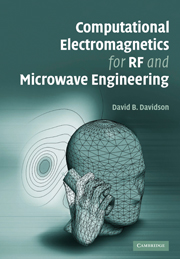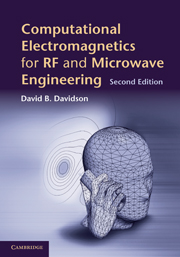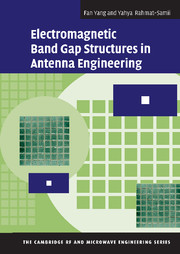Computational Electromagnetics for RF and Microwave Engineering
The numerical approximation of Maxwell's equations, Computational Electromagnetics (CEM), has emerged as a crucial enabling technology for radio-frequency, microwave and wireless engineering. The three most popular 'full-wave' methods - the Finite Difference Time Domain Method, the Method of Moments, and the Finite Element Method - are introduced in this book by way of one or two-dimensional problems. Commercial or public domain codes implementing these methods are then applied to complex, real-world engineering problems, and a careful analysis of the reliability of the results obtained is performed, along with a discussion of the many pitfalls which can result in inaccurate and misleading solutions. The book will empower readers to become discerning users of CEM software, with an understanding of the underlying methods and confidence in the results obtained. It also introduces readers to the art of code development. This book is aimed at senior undergraduate/graduate students taking CEM courses and practising engineers in the industry.
- Examines the strengths and weaknesses of every major computational electromagnetics technique
- Includes numerous practical applications with an emphasis on verification of the results and supported by additional material available on a dedicated website
- Practical hints on using codes reliably and optimally: there will also be a number of MATLAB scripts, implementing much of the theory discussed in the book, available on the website
Reviews & endorsements
"The book's way of presenting things is educational. Many topics are first covered in an introductory way, then in more depth theoretically and in the end Professor Davidson gives a practical application example or two for each main theme...In many cases the author gives extremely helpful and detailed guidance that surely supports the efforts of newcomers. Professor Davidson has succeeded in selecting the presentational style for his Computational Electromagnetics for RF and Microwave Engineering. Although about electromagnetics, the book is not too burdensome for undergraduate students and it contains enough examples of practical applications so that our colleagues already working in the industry or governmental institutions can follow the text on their own...As an overall grading, I found [the book] interesting, useful and worth reading."
Pekka Eskelinen, IEEE AES Magazine
This book is highly readable and an excellent introduction with lucid explanations of CEM. It represents an informative resource for all who may be involved in this area and is written by someone who knows the subject well…I would recommend this book as essential reading for RF and microwave engineers, as well as for students…a worthwhile publication for all interested in CEM.
Reza Danesfahani, IEE Communications Engineer
"Computational Electromagnetics for RF and Microwave Engineering, prepared by David B. Davidson, is a good book. It is well structured, well written, and clear...a valuable reference book for engineering students, lecturers, and CEM researchers. If you already are, or presumably will be, involved in CEM in one way or another, I think you should buy this book."
Levent Sevgi, IEEE Antennas and Propagation Magazine
Product details
August 2008Adobe eBook Reader
9780511410987
0 pages
0kg
11 tables
This ISBN is for an eBook version which is distributed on our behalf by a third party.
Table of Contents
- 1. An overview of computational electromagnetics for wireless and RF applications
- 2. The finite-difference time-domain method: a one-dimensional introduction
- 3. The finite-difference time-domain method in two and three dimensions
- 4. A one-dimensional introduction to the method of moments: thin-wire modelling
- 5. The application of the Feko and NEC2 codes to thin-wire antenna modelling
- 6. The method of moments for surface modelling
- 7. The method of moments and stratified media: theory
- 8. The method of moments and stratified media: practical applications of a commercial code
- 9. An introduction to the finite element method
- 10. A selection of more advanced topics on the finite element method.







